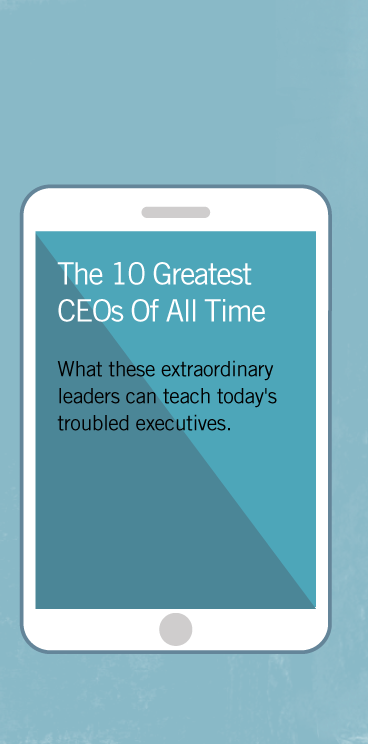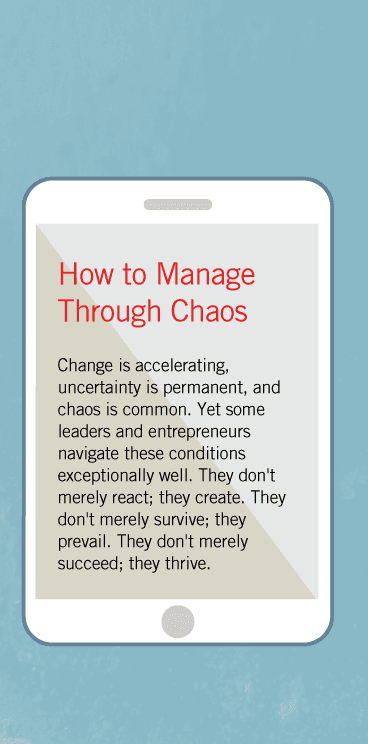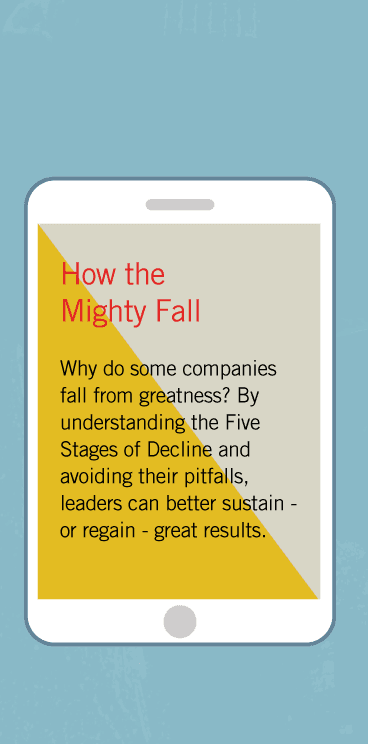Foreword to the 25th Anniversary Edition of Stephen Covey's The 7 Habits of Highly Effective People
I first met Stephen Covey in 2001, when he asked for a meeting to talk about ideas. After a warm greeting—his enveloping handshake feeling like the comfortable leather of a softball glove that you’ve worn a thousand times—we settled into a conversation that lasted two hours. Stephen began by asking questions, lots of questions. Here sat a master teacher, one of the most influential thinkers of the day, and he wanted to learn from someone 25 years his junior.
As the conversation opened an opportunity for me to exercise my own curiosity, I began, “How did you come up with the ideas in the 7 Habits?”
“I didn’t,” he responded.
“What do you mean?,” I asked. “You wrote the book.”
“Yes, I wrote the book, but the principles were known long before me.” He continued, “They are more like natural laws. All I did was put them together, to synthesize them for people.”
That’s when I began to understand why this work has had such an impact. Covey had spent more than three decades studying, practicing, teaching, and refining what he ultimately distilled into these pages. He did not seek credit for the principles; he sought to teach the principles, to make them accessible. He saw creating the 7 Habits not primarily as a means to his own success, but as an act of service.
When Bob Whitman, chief executive of FranklinCovey, called to ask if I would consider writing a foreword for the 25th anniversary edition of The 7 Habits of Highly Effective People, I responded first by re-reading the entire book; I’d read it shortly after its initial publication in 1989, and it was a gift to re-engage with its message. I also wanted to recalibrate: what makes it an enduring classic? I see four factors that contributed to its rarified stature:
- Covey created a "user interface" organized into a coherent conceptual framework, made highly accessible by Covey’s strong writing;
- Covey focused on timeless principles, not on mere techniques or momentary fads;
- Covey wrote primarily about building character, not about “achieving success”-- and thereby helped people become not just more effective individuals, but better leaders;
- Covey himself was a Level 5 teacher, humble about his own shortcomings, yet determined to share widely what he’d learned.
Stephen Covey was a master synthesizer. I think of what he did for personal effectiveness as analogous to what the graphical user interface did for personal computers. Prior to Apple and Microsoft, few people could harness computers to their daily lives; there was no easily accessible user interface—no mouse pointers, friendly icons, or overlapping windows on a screen, much less a touch screen. But with the Macintosh and then Windows, the mass of people could finally tap the power of the microchip behind the screen. Similarly, there had been hundreds of years of accumulated wisdom about personal effectiveness, from Benjamin Franklin to Peter Drucker, but it was never assembled into one coherent, user-friendly framework. Covey created a standard operating system—the “Windows”—for personal effectiveness, and he made it easy to use. He proved to be a very fine writer, a master of short stories and conceptual wordplay. I will never forget the story in Chapter 1 about the man on the subway who could not control his screaming kids (and the point it makes), nor will I ever forget the lighthouse or the wrong jungle or the analogy of the golden eggs. Some of his conceptual wrapping paper worked exceptionally well, being both descriptive of a concept, and at the same time prescriptive in its application. “Win/Win or No Deal.” “Seek First to Understand, then to be Understood.” “Begin with the End in Mind.” “Do First Things First.” He made the ideas even more accessible by using personal life-struggles and stories—raising children, building a marriage, dealing with friends—to teach the habits and build muscle fiber for living them.
The ideas embedded in the framework are timeless. They are principles. This is why they work, and why they speak to people in all age groups around the globe. In a world of change, disruption, chaos, and relentless uncertainty, people crave an anchor point, a set of constructs to give them guidance in the face of turbulence. Covey believed that timeless principles do indeed exist, and that the search for them is not folly, but wisdom. He rejected the view of those who shout from the rooftops, "There is nothing sacred, nothing enduring, nothing durable to build upon in this ever-changing landscape! Everything is new! Nothing from the past applies!"
My own research quest has focused on the question, “What makes a great company tick—why do some companies make the leap from good to great (and while others don’t), why do some become built to last (while others fall), and why do some thrive in chaos?” One of our key findings is the idea of "Preserve the Core / Stimulate Progress”; no enterprise can become or remain truly great without a core set of principles to preserve, to build upon, to serve as an anchor, to provide guidance in the face of an ever-changing world. At the same time, no company can remain great without stimulating progress –change, renewal, improvement, and the pursuit of BHAGs (Big Hairy Audacious Goals). When you blend these two together – Preserve the Core AND Stimulate Progress – you get a magical dialectic that keeps a company or organization vibrant over time. Covey found a similar pattern in personal effectiveness: first build upon a strong core of principles that are not open for continuous change; at the same time, be relentless in the quest for improvement and continuous self-renewal. This dialectic enables an individual to retain a rock-solid foundation and attain sustained growth for a lifetime.
But I think the most important aspect of The 7 Habits—what makes it not just practical, but profound—is its emphasis on building character rather than "attaining success.” There is no effectiveness without discipline, and there is no discipline without character. While writing this forward, I'm in the midst of finishing a two-year journey as the class of 1951 Chair for the Study of Leadership at the United States Military Academy at West Point. I’ve come to a personal belief that a key ingredient in the West Point recipe is the idea that great leadership begins first with character—that leadership is primarily a function of who you are, for this is the foundation for everything you do. How do you build leaders? You first build character. And that is why I see the 7 Habits not just about personal effectiveness, but about leadership development.
As I reflect upon some of the exceptional leaders I’ve studied in my research, I’m struck by how Covey’s principles manifest in many of their stories. Let me focus on one of my favorite cases, Bill Gates. It's become fashionable in recent years to attribute the outsized success of someone like Bill Gates to luck, to being in the right place at the right time. But if you think about it, this argument falls apart. When Popular Electronics put the Altair computer on its cover, announcing the advent of the first-ever personal computer, Bill Gates teamed up with Paul Allen to launch a software company and write the BASIC programming language for the Altair. Yes, Gates was at just the right moment with programming skills, but so were other people—students in computer science and electrical engineering at schools like Cal-Tech, MIT, and Stanford, seasoned engineers at technology companies like IBM, Xerox, and HP; and scientists in government research laboratories. Thousands of people could've done what Bill Gates did at that moment, but they didn't. Gates acted upon the moment. He dropped out of Harvard, moved to Albuquerque (where the Altair was based), and wrote computer code day and night. It was not luck of being at the right moment in history that separated Bill Gates, but his proactive response to being in the right moment (Habit 1: Be Proactive).
As Microsoft grew into a successful company, Gates expanded his objectives, guided by a very big idea: a computer on every desk. Later, Gates and his wife created the Bill & Melinda Gates Foundation, with huge goals, such as eradicating malaria from the face of the Earth. As he put it in his 2007 Harvard commencement speech, “For Melinda and for me, the challenge is the same: how can we do the most good for the greatest number with the resources we have” (Habit 2: Begin with the End in Mind).
True discipline means channeling our best hours into first-order objectives, and that means being a nonconformist in the best sense. "Everyone" might say finishing Harvard should be the most important task for a young Bill Gates. Instead, he aligned his efforts with his mission, despite any disapproving glances from well-meaning people. As he built Microsoft, he poured his energies into two overriding objectives: getting the best people and executing on a few big software bets; everything else was secondary. When Gates first met Warren Buffett at a dinner, the host asked everyone at the table what they saw as the single most important factor in their journey through life. As Alice Schroeder related in her book The Snowball, both Gates and Buffett gave the same one-word answer: "Focus." (Habit 3: Put First Things First).
Gates’s relationship to the fourth habit (Habit 4: Think Win / Win) is a bit more complicated. At first glance, Gates would appear to be a win/lose character, a fierce combatant who so feared how easily a company’s flanks could be turned that he wrote a “nightmare” memo laying out scenarios of how Microsoft could lose. In the race for industry standards, there would be only a small set of big winners, and a lot of losers, and Gates had no intention of Microsoft being anything less than one of the big winners. But a closer look reveals that he was masterful at assembling complementary forces into a coalition. To achieve his big dream, Gates understood that Microsoft would need to complement its strengths with the strengths of others, such as Intel with its microprocessors, and personal computer manufacturers such as IBM and Dell. He also shared equity, so that when Microsoft won, Microsoft people would win as well. And he displayed a remarkable ability to complement his personal strengths with the strengths of others, especially his longtime business alter ego, Steve Ballmer; Gates and Ballmer accomplished much more by working together than they ever could alone; 1+1 is much larger than 2. (Habit 6: Synergize).
As Gates moved to social impact with the Foundation, he did not step forth saying, “I’ve been successful in business, so I already know how to achieve social impact.” Quite the opposite; he brought a relentless curiosity, a quest to gain understanding. He pushed with questions, trying to get a handle on the science and methods needed to solve some of the most intractable problems, ending one exchange with a friend with a comment along the lines of “I need to learn more about Phosphates.” (Habit 5: Seek First to Understand, then to be Understood.) And, finally, I'm struck by how Gates renewed. Even during the most intense years building Microsoft, he periodically set aside an entire week to unplug for reading and reflection, a Think Week. He also developed a penchant for reading biographies; at one point he told Brent Schlender of Fortune, “It’s amazing how some people develop during their lives”—a lesson Gates looks to haven taken as a mantra for his own life (Habit 7: Sharpen the Saw.)
Gates is a fabulous case, but I could have used others. I could have highlighted Wendy Kopp, who founded Teach for America with the idea to inspire hundreds of thousands of college graduates to serve at least two years teaching children in our most underserved schools, with the ultimate aim to create an indomitable social force to radically improve K-12 education (Be Proactive; Begin with the End in Mind). Or I could have used Steve Jobs living in a house without furniture, too busy creating insanely great products to get around to seemingly unimportant activities like buying a kitchen table or a sofa (Put First Things First). Or Herb Kelleher of Southwest Airlines, who created a win/win culture between management and labor, with everyone uniting together after 9/11 to keep its thirty years of consecutive profitability intact while also keeping intact every single job (Think Win / Win). Or even Winston Churchill, who took naps throughout the Second World War, thereby giving himself "two mornings" every day (Sharpen the Saw).
I do not mean to imply that the 7 Habits map one-for-one to building a great company. The principles in Good to Great and Built to Last, for example, and the principles in The 7 Habits of Highly Effective People are complementary, but distinct. Covey did not set out to write a book on building great organizations, but on achieving great personal effectiveness. Still, organizations are composed of people, and the more effective those people, the stronger the organization. And I do suspect that those who live the 7 Habits perhaps have a higher likelihood of becoming Level 5 leaders, those rare transformational figures I wrote so much about in Good to Great. Level 5 leaders display a paradoxical combination of personal humility and professional will, channeling their energy, drive, creativity, and discipline into something larger and more enduring than themselves. They’re ambitious, to be sure, but for a purpose beyond themselves, be it building a great company, changing the world, or achieving some great object that’s ultimately not about them. One of the most important variables in whether an enterprise remains great lies in a simple question: what is the truth about the inner motivations, character, and ambition of those who hold power? Their true, internal motivations will absolutely show up in their decisions and actions—if not immediately, then over time, and certainly under duress—no matter what they say or how they pose. And thus, we return full circle to a central tenet of Covey's framework: build inner character first—private victory before public victory.
And that brings me to Stephen Covey himself as a Level 5 teacher. Throughout his rather miraculous career, he displayed a disarming humility about his impact and influence, combined with an indomitable will to help people grasp the ideas. He genuinely believed the world would be a better place if people lived the 7 Habits, and that belief shines through these pages. As a Level 5 teacher, Stephen Covey did his human best to live what he taught. He said that he personally most struggled with Habit 5 (“Seek First to Understand, then to be Understood”). There is a great irony in this, as he first went on a multi-decade intellectual journey to gain understanding, before he wrote the book. He was first and foremost a learner who became a teacher, then a teacher who learned to write, and in so doing made his teachings enduring. In Habit 2, Stephen challenges us to envision our own funeral, and consider, “What would you like each of the speakers to say about you and your life? … What character would you like them to have seen in you? What contributions, what achievements would you want them to remember?” I suspect he would be very pleased with how it turned out for him.
No person lasts forever, but books and ideas can endure. When you engage with these pages, you will be engaging with Stephen Covey at the peak of his powers. You can feel him reaching out from the text to say "Here, I really believe this, let me help you—I want you to get this, to learn from it, I want you to grow, to be better, to contribute more, to make a life that matters." His life is done, but his work is not. It continues, right here in this book, as alive today as when first written. The 7 Habits of Highly Effective People is 25 twenty-five years young, off to a very strong start indeed.
Jim Collins
Boulder, Colorado
July, 2013






